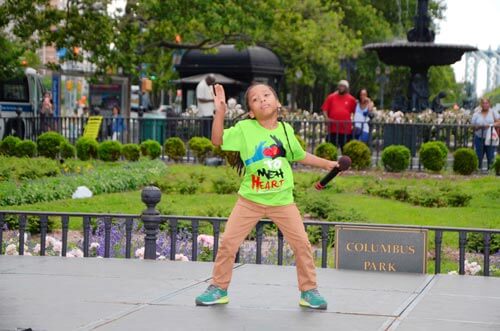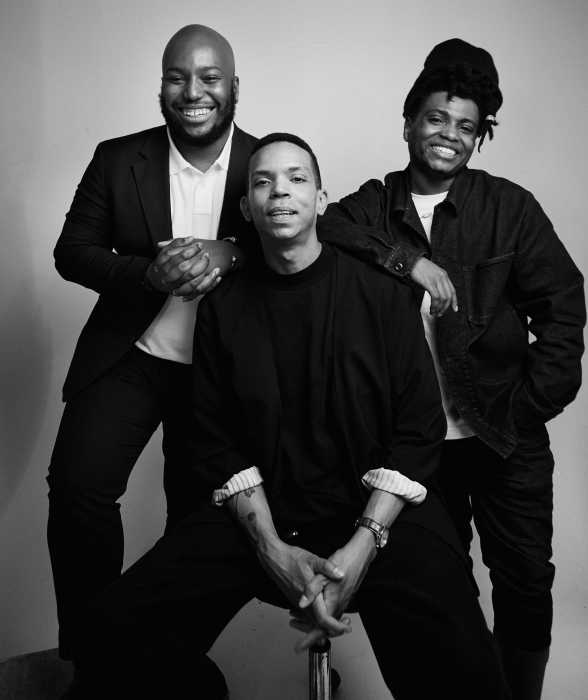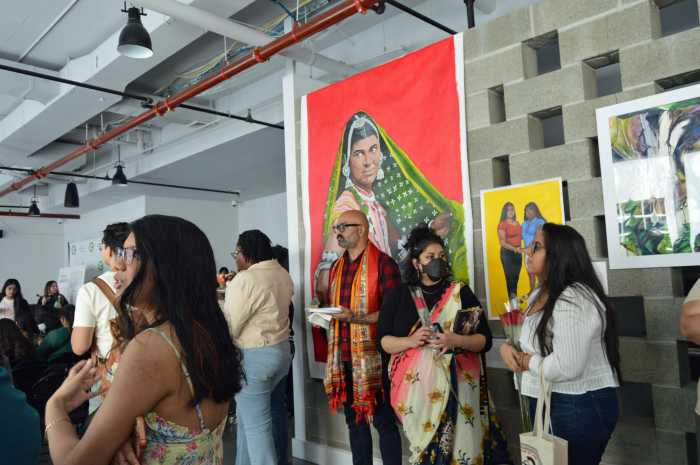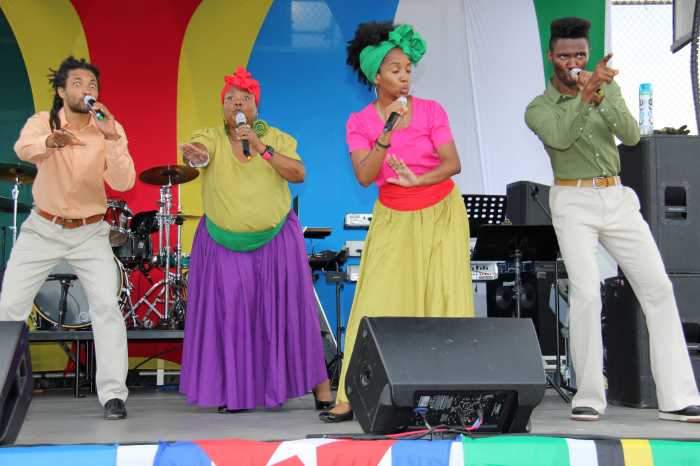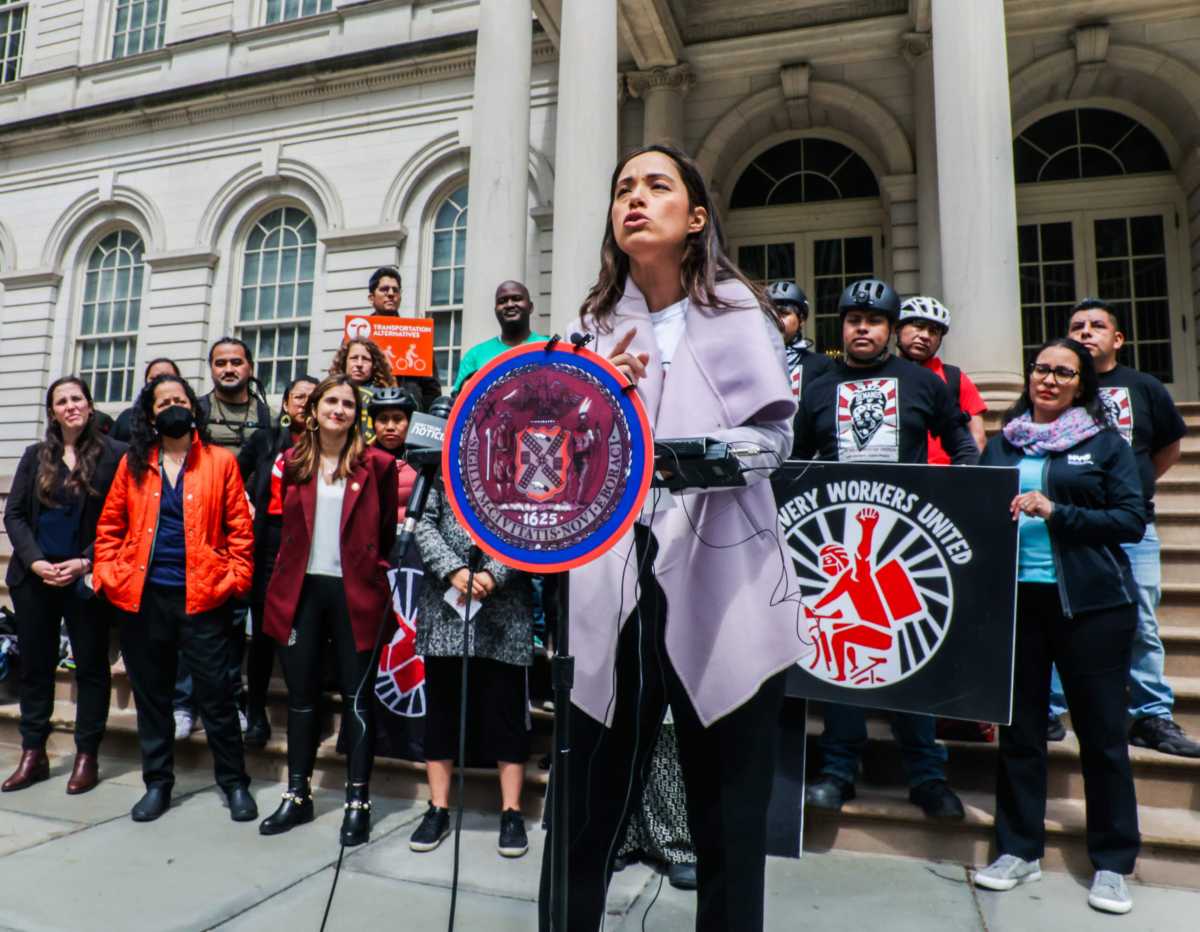Last year, as Caribbean-American Heritage Month approached its sunset with a Caribbean-American open air concert featuring Mighty Sparrow, Lima Calvio of Byron Lee and the Dragonaires, and Val Adams, then Calypso King of Grenada, who had the Borough Hall, Brooklyn crowd rollicking. This year, as the ninth year of the celebration culminated on June 26 at Columbus Park, Borough Hall, it was the six-year-old Kamarley, who held his own among the likes of Antigua’s Soca Queen Claudette “CP” Peters, T&T’s Sherma Andrews and Panama’s Magaly. The six-year-old excited the crowd with the quality of his Reggae and Soca renditions, and artistic synchrony of body language and musical rhythm which belie the tenderness of his age.
As he belted out Busy Signal’s “Reggae Song,” Machel Montano’s “Too Young to Soca,” and Kerwin de Bois’ “Spoil Myself,” his vocal quality, control and ability to hold the crowd’s attention imposed the belief that the crowd was looking at a Reggae and Soca prodigy. People not only muttered their future expectations but rushed with their smart phones and cameras to capture moments of him. His mother explained that Kamarley began entertaining at age two at kid parties and is usually hired for different events.
The concert was quite interesting as it highlighted elements of Caribbean cultural diversity; English, French, Spanish, Indian, and Caribbean-American. While the crowd was most enthused by Kamarley, the Indian ‘Mehndi’ (Henna) dance by the Srijan Dance Center, and the folklore characters dramatized, were two elements which specifically captured characteristics of Caribbean cultural history and socialization.
For thousands of years henna has been grown in various parts of the world, from Ancient Egypt to South Asia, inclusive of other parts of North Africa, the Horn of Africa, the Arabian Peninsula, and the Near East. The plant served as dye for hair, body art, leather, wool, textile and celebrations such as war and marriage. In the late Bronze Age, women in the Eastern Mediterranean adorned their bodies in preparation for their husbands at marriage and fertility ceremonies. While in the henna growing parts of the world, Christians, Muslims, Hindus, Sikhs, Zoroastrians and others celebrate marriage by adorning the bride and groom, in the Caribbean it is essentially a Hindus practice.
La Diablesse/Lajables, (the Devil Woman), and Soucouyant /Sukuya (the Old Hag), were the two folklore characters. In Caribbean culture, the Old Hag is a supernatural being which at nights, changes into a ball of fire or any animal to cast spells on people such as changing them into animals. But she must re-enter her human skin before the cock crows at dawn else she dies. When one is suspected to be a Devil Woman, people enter her house at night and put salt into the human skin she shed. It shrinks. She cannot get back into it. She dies.
The Devil Woman roams at night for men whom she tricks to their death. She hides her ugliness, deadly looks, and cloven foot, under a beautiful wide-brimmed hat, veil over her face, exquisite blouse with puffy sleeves, long petticoat and skirts. She turns up at village parties, charms men, and asks for an escort home. She puts him under her spell, leads him into the woods and disappears. He loses his way in the dark, falls into a ravine or river to his death or attacked by wild hogs.

Photo by Lin-Jay Harry-Voglezon


